Exercise 2
With the following exercise, you can test how good your command of event identification is.
Therefore we have chosen ten examples. They are stored here in electronic form for you to
download. You can download the necessary MINERVA program here.
At the International Masterclasses, they are already stored on your computer desktop. They have to
be read in the program MINERVA (with “Read Event Locally”).
Your task is to distinguish between signal and background events. Signal events are only events,
which produce exactly one W particle. In signal events you also determine whether the W particle has
decayed into an electron or positron or into a muon or antimuon, and the associated (anti-)neutrino.
Events with jets, Z particles, and top-quark pairs are background events.
You can check your results using the table below. For each event, choose which process you think is underlying the event. By clicking “Confirm Task”, you can find out the number of
events identified correctly. By clicking “Correct Answers”, you can see the correct answers.
Have fun on the test!
-
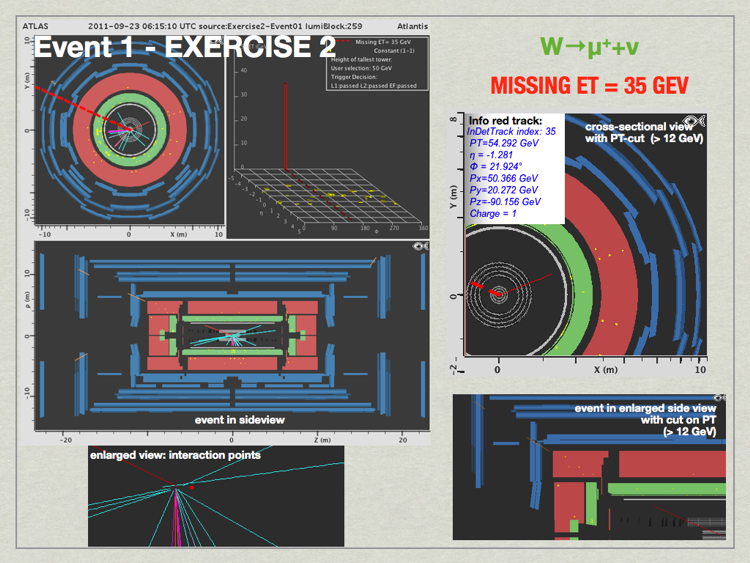 MINERVA can only display information on muons in cross-sectional view if the muon travels through the barrel region. In this example the muon leaves in forward direction and thus can only be identified with help of the side view. Tracking and calorimeter information is available in cross-sectional view though.
MINERVA can only display information on muons in cross-sectional view if the muon travels through the barrel region. In this example the muon leaves in forward direction and thus can only be identified with help of the side view. Tracking and calorimeter information is available in cross-sectional view though.
-
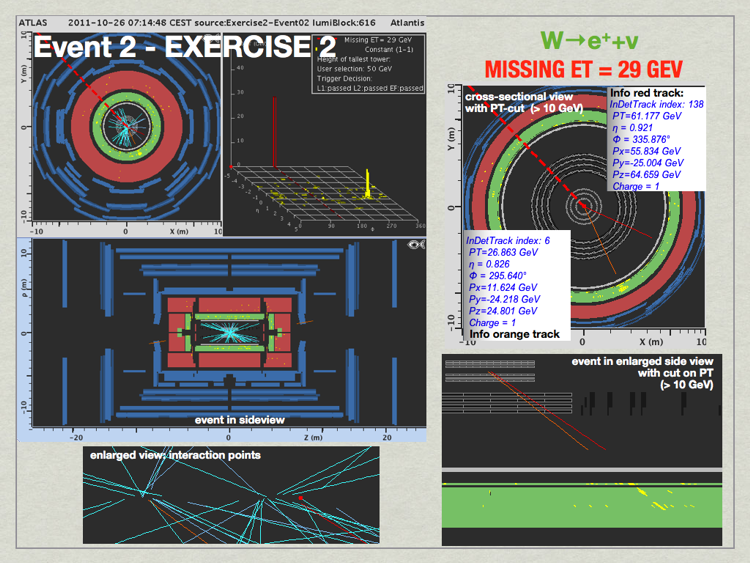 The red track cannot be identified as an electrically charged lepton, arisen from a different vertex (compared to the positron shown with orange track) and is thus not of interest.
The red track cannot be identified as an electrically charged lepton, arisen from a different vertex (compared to the positron shown with orange track) and is thus not of interest.
-
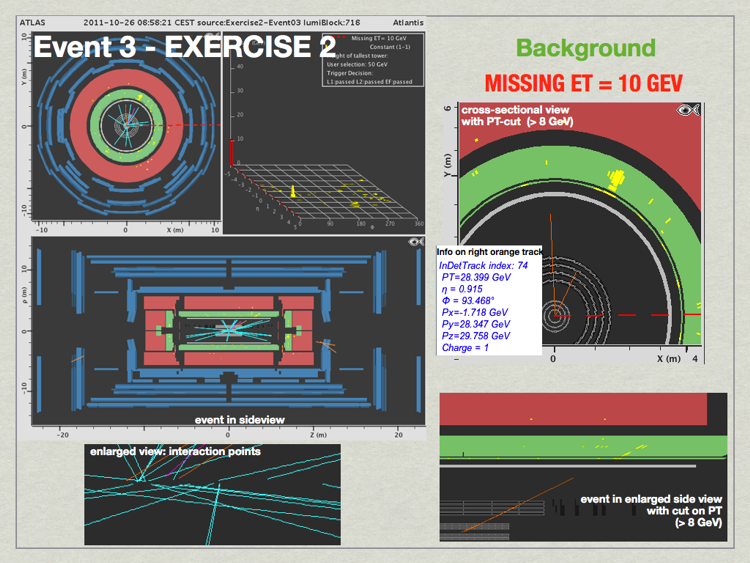 Missing transverse energy is too little.
Missing transverse energy is too little.
-
 Missing transverse energy is too little. Electron candidate (orange track) is not well isolated from electrically charged particles around.
Missing transverse energy is too little. Electron candidate (orange track) is not well isolated from electrically charged particles around.
-
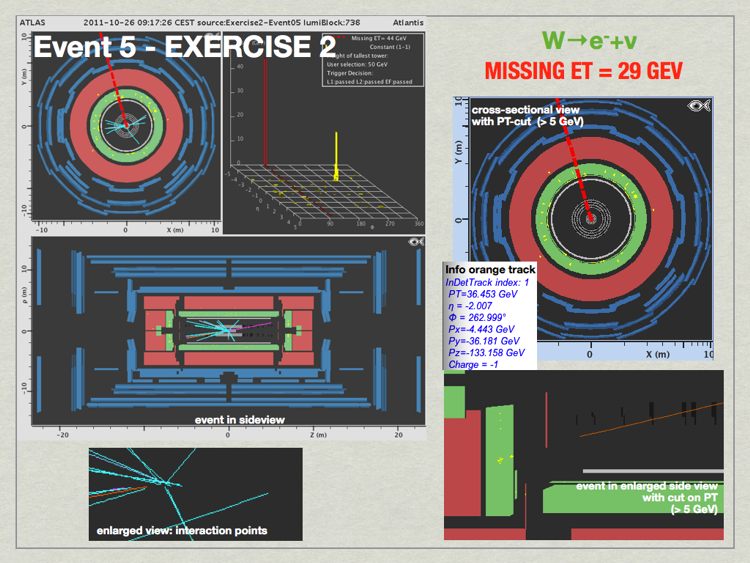 MET>25 GeV, there is exactly one electron (electric charge = -1) in the event, well isolated. It is not visible in cross-sectional view since it moves in forward direction but can be clearly identified in side view.
MET>25 GeV, there is exactly one electron (electric charge = -1) in the event, well isolated. It is not visible in cross-sectional view since it moves in forward direction but can be clearly identified in side view.
-
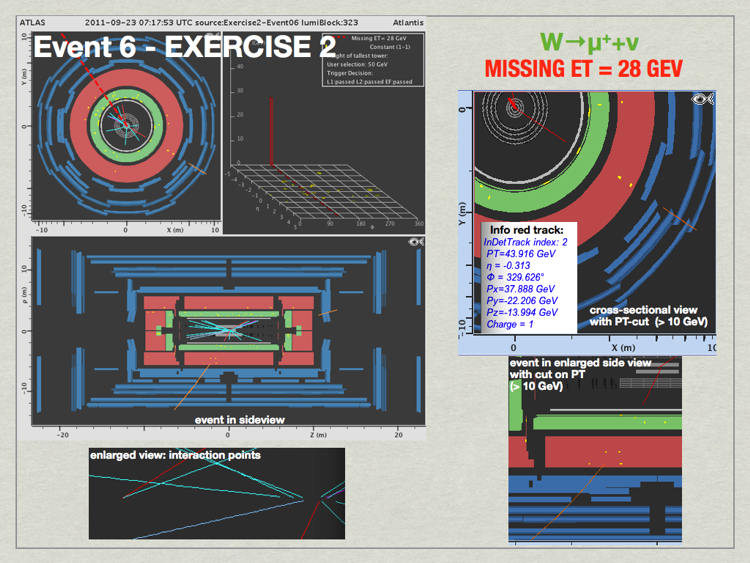 MET>25GeV, there is exactly one anti-muon (electric charge = 1) arising from the right vertex (see enlarged side view on bottom left), well isolated, with PT>20GeV.
MET>25GeV, there is exactly one anti-muon (electric charge = 1) arising from the right vertex (see enlarged side view on bottom left), well isolated, with PT>20GeV.
-
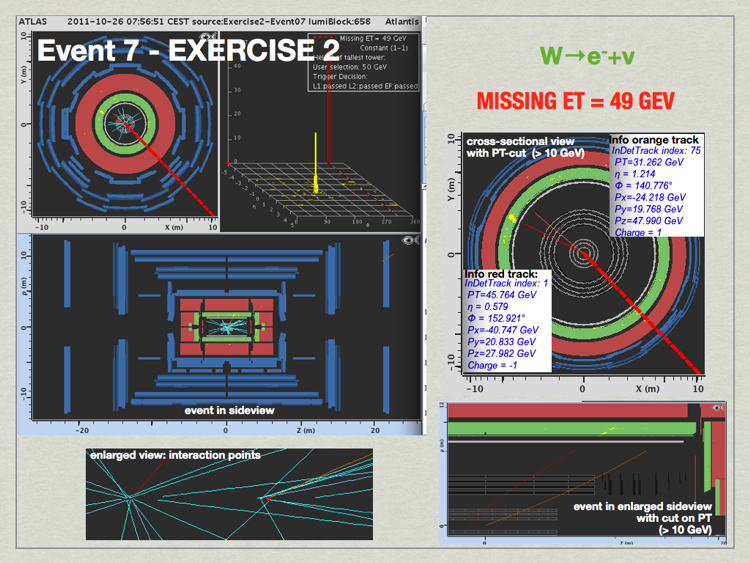 MET > 25 GeV. Two hight-PT, isolated tracks arising from two vertices. Only the red track (PT > 20 GeV) can be combined with calorimeter clusters and thus identified as electron (electric charge = -1).
MET > 25 GeV. Two hight-PT, isolated tracks arising from two vertices. Only the red track (PT > 20 GeV) can be combined with calorimeter clusters and thus identified as electron (electric charge = -1).
-
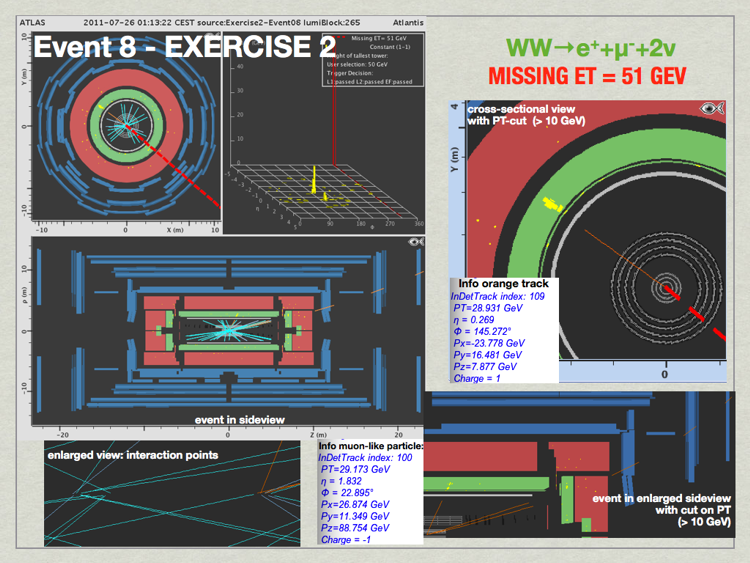 MET > 25 GeV, there are exactly two, oppositely electrically charged leptons in the event (a positron and a muon), both are well-isolated from Jets. The muon can only be identified in side view since it moves in forward direction. There is also another high-PT track in the event, which cannot be assigned to third electrically charged lepton.
MET > 25 GeV, there are exactly two, oppositely electrically charged leptons in the event (a positron and a muon), both are well-isolated from Jets. The muon can only be identified in side view since it moves in forward direction. There is also another high-PT track in the event, which cannot be assigned to third electrically charged lepton.
-
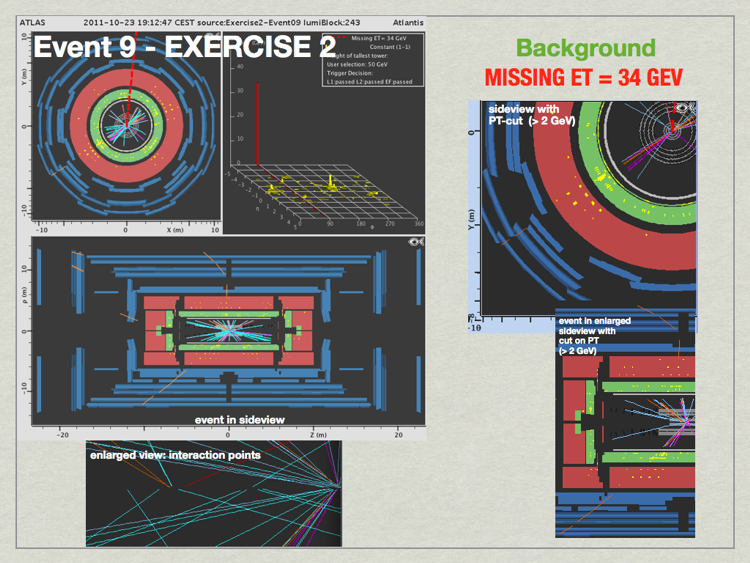 Possible muon candidates are not isolated from Jets.
Possible muon candidates are not isolated from Jets.
-
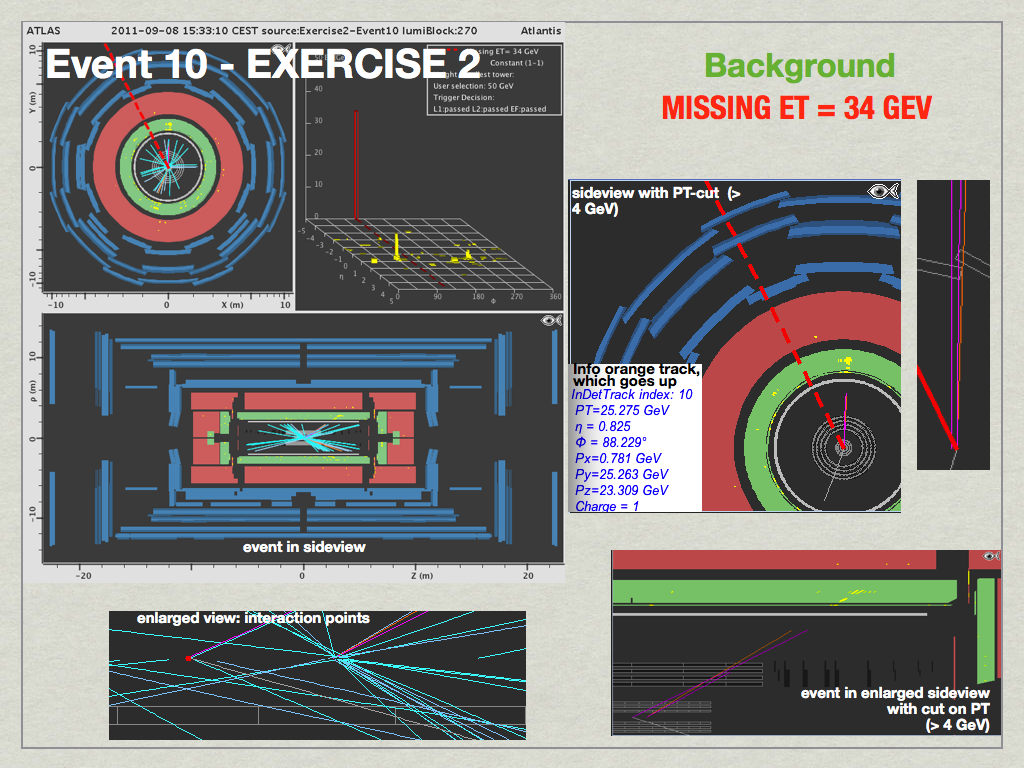 There are two orange tracks in the event. The one that can be combined with clusters in the calorimeter goes up in cross-sectional-view. It is overlaid by a purple track, whose accompanying particle was produced so close to our electron candidate, that we cannot really say it was isolated (look at the enlarged views).
There are two orange tracks in the event. The one that can be combined with clusters in the calorimeter goes up in cross-sectional-view. It is overlaid by a purple track, whose accompanying particle was produced so close to our electron candidate, that we cannot really say it was isolated (look at the enlarged views).










